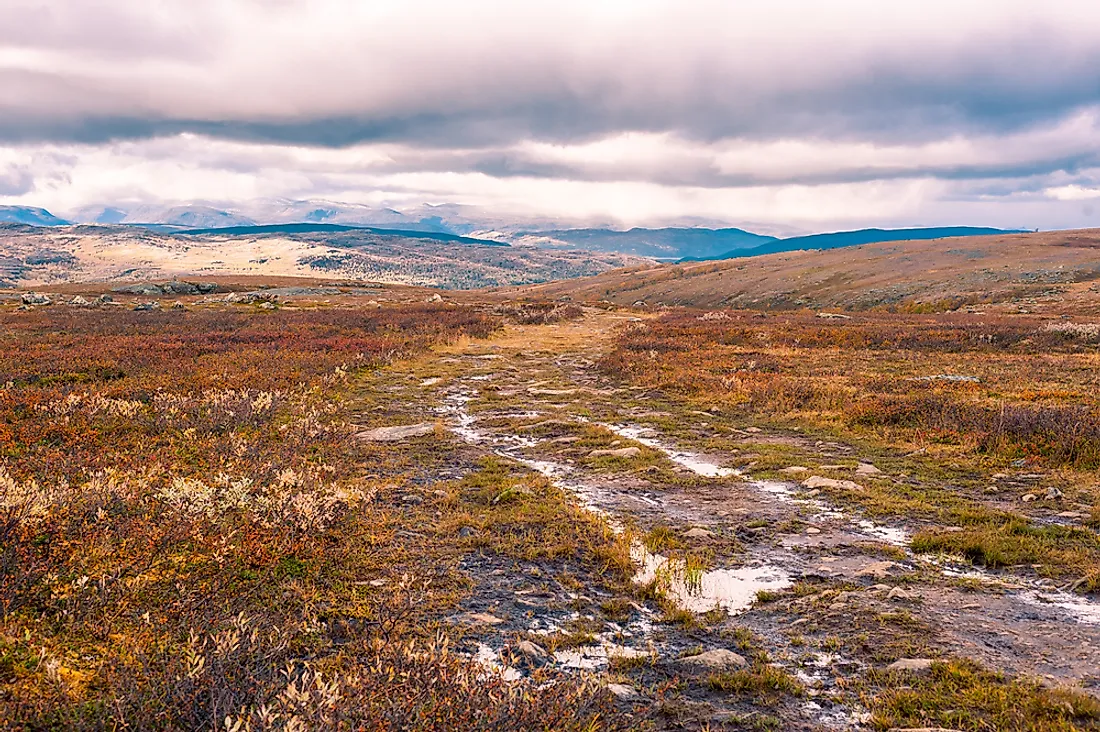What Is A Moorland?

Description
Moorlands are open habitat highland areas with acidic, low nutrient, and water-logged soils. Moorland habitats comprise of heath-lands, acid grasslands, and swampy landscapes. The heath-lands are dotted with shrubs like bilberry and ling heather, while acid grasslands have wavy hair grass, sheep fescue, and matgrass. On the swampy or bog landscapes, mosses like sphagnum spp, sedges like cotton grass, and small shrubs grow there according to research by Moors for the Future. Moorlands are managed by grazing animals or rotational burning. The burning creates a habitat mix which provides heather and juniper shrubs for birds to inhabit; and short succulent heathers for them to feed on, according to Cairngorms National Park Authority research. Moorlands also have diverse mammals, invertebrates in their expanse.
Moorland Mammals
The UK has 75 percent of moorland habitats in the world, spread throughout the uplands of England. These varied moorland habitats provide shelter for mammals like the mountain hare, vole, and shrews. The mountain hares, which live in high altitude areas are native to Britain and are found in the Peak District of England. The vole, a small rat-like herbivorous rodent which feeds on grass, is also found in large numbers on grass moorland and few ones in heather moorland according to the Upland Management Handbook. The voles are food for the short-eared owl, hen harrier, turkey vulture, polecat and the European udder snake. Rocky virgin moorlands also provide living habitat to the pine marten. While open moorlands are a vital buffer that prevents grey squirrels from moving into conifer or deciduous woodlands. They also provide foraging habitat for the red deer found in south west England expanse.
Moorland Invertebrates
Money spiders, moths, ground and rove beetles and crane flies are in plenty in the moorlands. The cranes fly, click beetle and annelid worms are also present. In the moorland biodiversity, crane flies and wireworms form part of the diet of upland birds. Beetle species like the click and common tiger beetles reside in the grassy moorlands. Moth species like the northern eggar, emperor moth and the common heath moth are also found in the moorlands. Butterfly species like the mountain ringlet, small heath and large heath butterflies are also found in moorlands with the latter in bogs. Other insect species common in moorland include the bumble bee, black darter, golden ringed and the moorland hawker dragonflies according to the Upland Management Handbook.
Moorland Benefits And Protection
Besides flora and wildlife, moorlands are also beneficial to humans. They act as natural reservoirs for rain that falls in the highlands and also release it into rivers and streams. The water from the rivers and streams is then piped for domestic use. If moorlands are mismanaged through over burning or grazing it exposes the peat matter. The peat is made up of dead sphagnum mosses and acts as a carbon reservoir. If it is destroyed, it gets easily washed by rains into streams and rivers thereby polluting them. The peat organic matter and moss also soaks up rain thereby reducing incidences of flooding in towns or villages downstream. That is why it is important for moorlands to have vegetable cover to protect the peat from drying or being overly drained according to the Royal Society for the Protection of Birds research.











